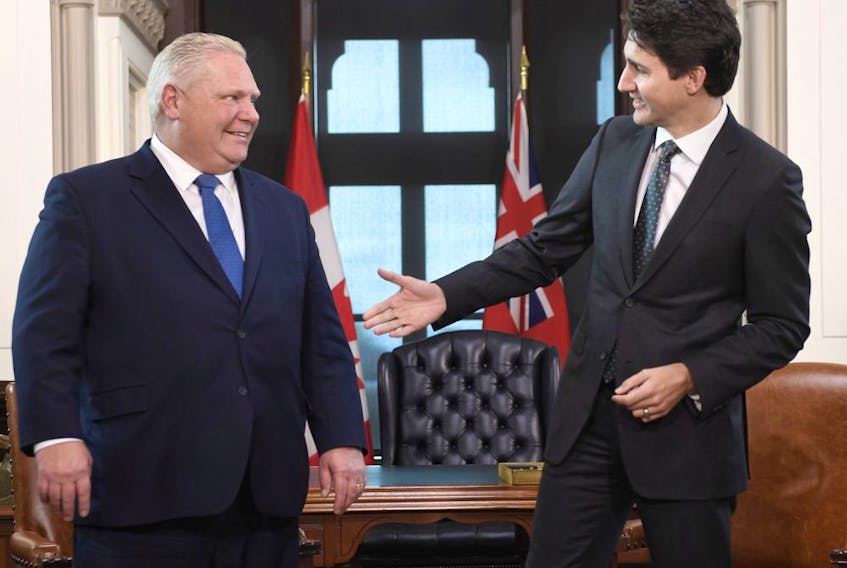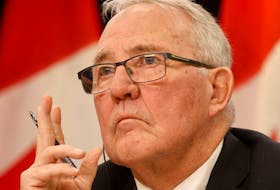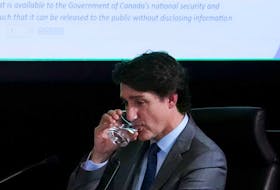In the time of COVID-19, are our governing institutions functioning as they should? The Queen’s University School of Policy Studies has created a Governance Working Group of leading scholars and practitioners to help answer that question. This is part of that series.
The challenge of provincial debt
Canada’s provinces entered the pandemic the most indebted subnational sector in the world . This burden poses few immediate challenges given low interest rates and the Bank of Canada’s recent efforts to support provincial borrowing . That’s good, because the last thing we need is for provinces to slash their deficits during a pandemic. But in the long run, provincial debts need to stabilize. What measures can Canadian governments take to ensure they do?
The answer depends on the source of the debt. According to many, it is the longstanding imbalance between the fiscal capacities and responsibilities of the federal and provincial governments. The federal government benefits from a more diversified and stable tax base, but the provinces are strapped with a disproportionate share of open-ended expenditures (notably health care). Ottawa could save Canadians a lot of grief, according to this view, by passing a greater share of its resources on to provinces. Ideally, that would include temporary measures to help provinces cope with the pandemic (such as the $14 billion the federal government has committed to help re-open provincial economies) and more enduring measures to limit the provinces’ structural and cyclical deficits.
But can the federal government afford it? Given its own bulging deficit, a repeat of 1995 – when it slashed provincial transfers – may seem like a more likely post-pandemic response . But federal debts are well below their 1990s levels; most of the deficit spending is temporary; and interest rates will likely remain low for some time. The federal government will have to stabilize its debt eventually , but its fiscal situation is more manageable than Fitch’s recent credit rating downgrade, from AAA to AA+, has led some to believe.
Political conditions also seem ripe for change. The federal government was poised to enhance the Fiscal Stabilization Program before the pandemic and the crisis will only strengthen calls to cushion provincial revenue shocks. The pandemic has also piqued federal interest in long-term care and other areas of provincial jurisdiction and the federal COVID-19 response may have raised expectations of Ottawa’s policy role. A bigger role is not, of course, a given. Several provinces have already opposed federal conditions and this may dampen federal enthusiasm to help. The federal government may also come under pressure to consolidate its deficit – if not from bond markets then from political forces .
It is also not clear whether additional transfers would work. Cross-national research suggests increasing them often results in higher deficits , particularly if they appear to shield recipients from irresponsible choices. Pandemic-related supports are temporary and unlikely to create this perception. And the federal government can limit bailout expectations by distributing longer-term transfers according to clear and fixed criteria. But the pressure for ad hoc supports will be high.
The fixation with transfers also distracts us from another source of deficits. The provinces never would have ended up issuing more debt than the federal government if investors were not confident they could sustain it. That confidence has a lot of sources, but one is the belief, widely held among bondholders, that the federal government is unlikely to let a province default . These expectations do not elevate provinces to the status of federal borrower, but they do allow the provinces to borrow more than they can independently sustain.
Canada is not the only country in which subnational governments borrow with an implicit guarantee, but it is one of the few in which implicitly backed units borrow without national constraint. These rules are almost impossible to negotiate in the absence of a sustained repayments crisis, particularly in a highly regionalized country like Canada, and thankfully the provinces are nowhere near such a crisis yet.
But perhaps Ottawa could get ahead of the problem and establish a federal credit agency to lend to provinces at federal rates. If it is established soon, it could lend unconditionally until the crisis is over. Beyond that, it could require recipients to commit to a fiscal consolidation plan. Only distressed provinces would apply and the stigma alone might strengthen incentives for fiscal discipline. If the federal government launched the facility with an expanded set of transfers, the message would be clear: it is willing to support provinces (perhaps a lot) but there are limits to that support and no free bailouts for provinces that fail to live within them.
Kyle Hanniman is an assistant professor in the Department of Political Studies, Queen’s University.
Copyright Postmedia Network Inc., 2020









